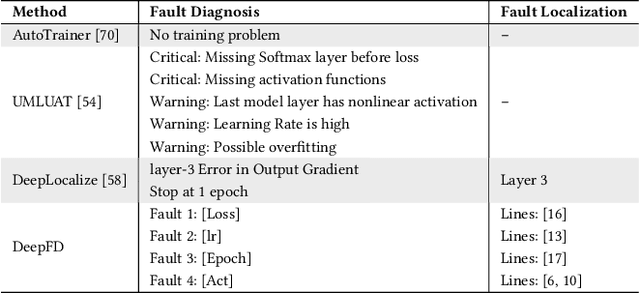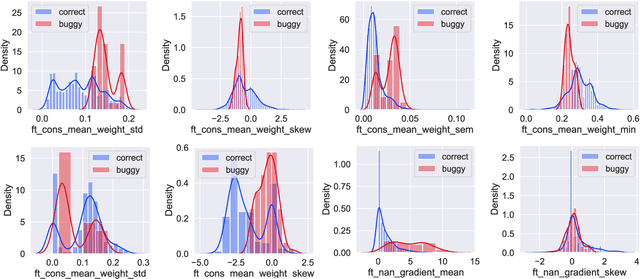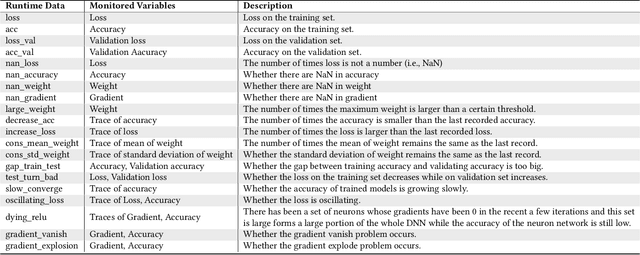DeepFD: Automated Fault Diagnosis and Localization for Deep Learning Programs
Paper and Code
May 04, 2022



As Deep Learning (DL) systems are widely deployed for mission-critical applications, debugging such systems becomes essential. Most existing works identify and repair suspicious neurons on the trained Deep Neural Network (DNN), which, unfortunately, might be a detour. Specifically, several existing studies have reported that many unsatisfactory behaviors are actually originated from the faults residing in DL programs. Besides, locating faulty neurons is not actionable for developers, while locating the faulty statements in DL programs can provide developers with more useful information for debugging. Though a few recent studies were proposed to pinpoint the faulty statements in DL programs or the training settings (e.g. too large learning rate), they were mainly designed based on predefined rules, leading to many false alarms or false negatives, especially when the faults are beyond their capabilities. In view of these limitations, in this paper, we proposed DeepFD, a learning-based fault diagnosis and localization framework which maps the fault localization task to a learning problem. In particular, it infers the suspicious fault types via monitoring the runtime features extracted during DNN model training and then locates the diagnosed faults in DL programs. It overcomes the limitations by identifying the root causes of faults in DL programs instead of neurons and diagnosing the faults by a learning approach instead of a set of hard-coded rules. The evaluation exhibits the potential of DeepFD. It correctly diagnoses 52% faulty DL programs, compared with around half (27%) achieved by the best state-of-the-art works. Besides, for fault localization, DeepFD also outperforms the existing works, correctly locating 42% faulty programs, which almost doubles the best result (23%) achieved by the existing works.
 Add to Chrome
Add to Chrome Add to Firefox
Add to Firefox Add to Edge
Add to Edge